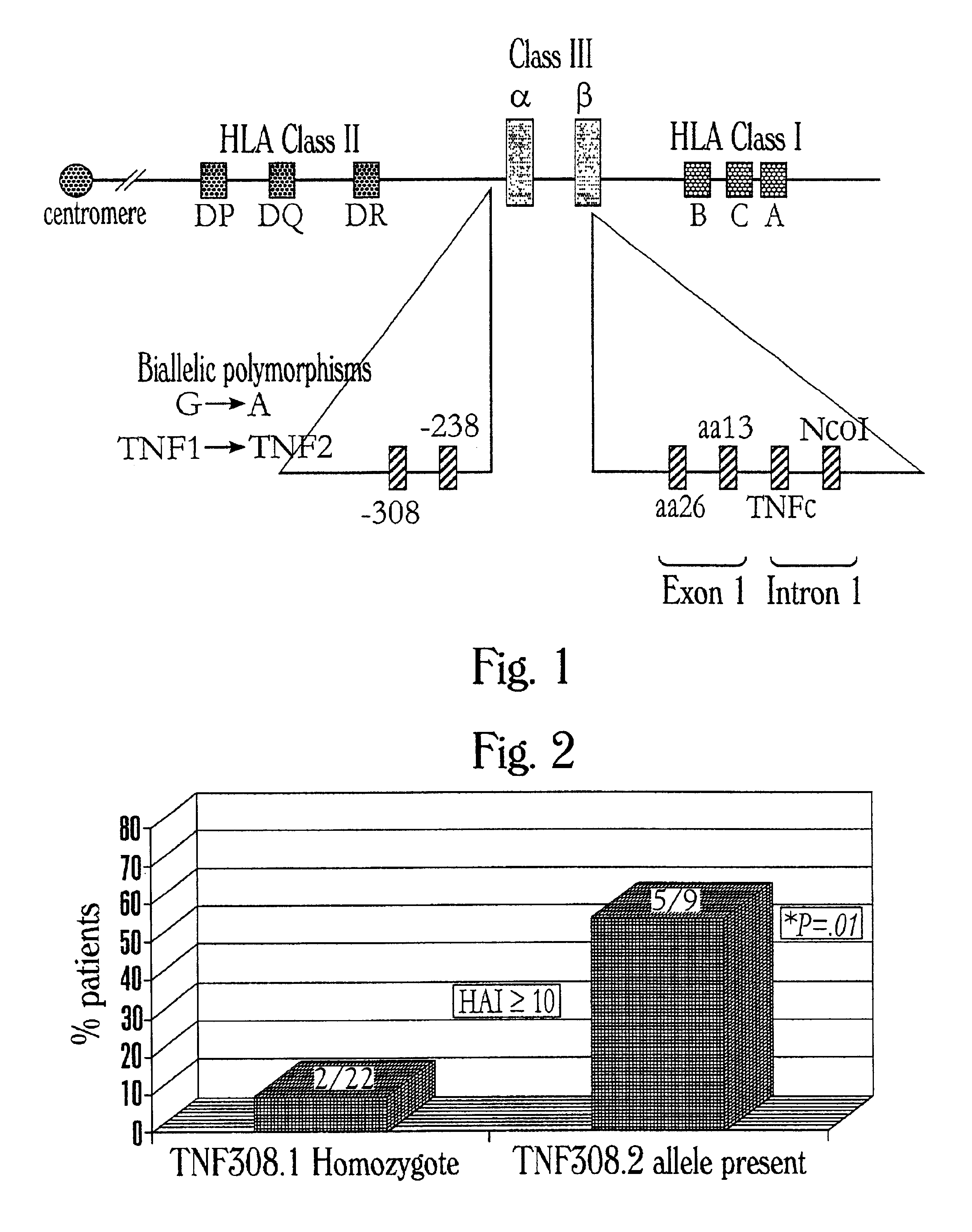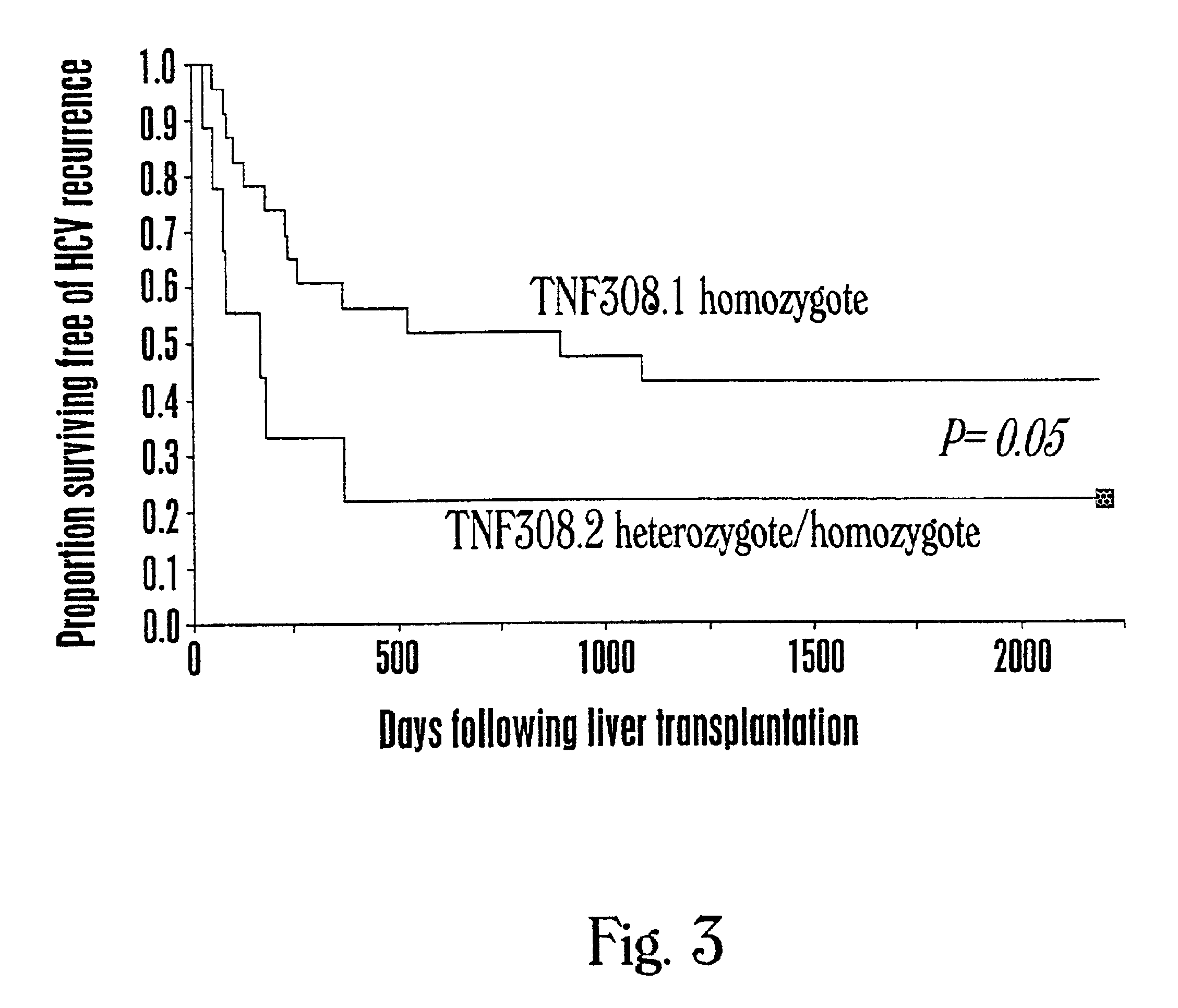Methods for identifying a preferred liver transplant donor
a liver transplant and donor technology, applied in the field of molecular medicine, can solve the problems of 15 percent of hepatitis c patients, invariably occurring reinfection of the transplanted liver with hcv, and the inability to identify the preferred donor, so as to limit the severity of recurrence of hepatitis
- Summary
- Abstract
- Description
- Claims
- Application Information
AI Technical Summary
Problems solved by technology
Method used
Image
Examples
example i
Donor Polymorphism of the TNF-α Gene is Correlated with Hepatitis C Recurrence
[0060]This example describes a correlation between a TNF-α allele in a liver donor and recurrence of hepatitis C in a liver transplant recipient.
[0061]The study group consisted of 31 patients who underwent orthotopic liver transplantation between July 1989 and November 1994. These patients were selected from a larger group of HCV-seropositive liver transplant recipients because stored donor tissue specimens were available. Donor spleen tissue was stored whenever available; no donor or recipient criteria were used to select specimens for storage. HCV had been diagnosed by ELISA 2.0 (Abbott Laboratories; Chicago Ill.) and / or polymerase chain reaction (PCR) as described previously (DiBisceglie, Hepatology 22:660-663 (1995)).
[0062]Liver biopsies were obtained for each patient by protocol at 7, 14, and 365 days, as indicated by an elevation from the baseline liver function biochemistries, and following treatmen...
PUM
| Property | Measurement | Unit |
|---|---|---|
| transmission | aaaaa | aaaaa |
| frequency | aaaaa | aaaaa |
| physical map | aaaaa | aaaaa |
Abstract
Description
Claims
Application Information
 Login to View More
Login to View More - R&D
- Intellectual Property
- Life Sciences
- Materials
- Tech Scout
- Unparalleled Data Quality
- Higher Quality Content
- 60% Fewer Hallucinations
Browse by: Latest US Patents, China's latest patents, Technical Efficacy Thesaurus, Application Domain, Technology Topic, Popular Technical Reports.
© 2025 PatSnap. All rights reserved.Legal|Privacy policy|Modern Slavery Act Transparency Statement|Sitemap|About US| Contact US: help@patsnap.com


